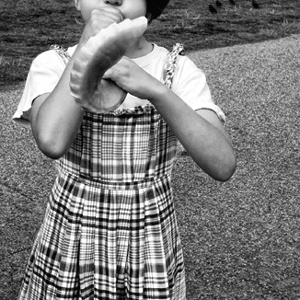 Capital Affairs: London and the Making of Permissive Society
Capital Affairs: London and the Making of Permissive Society
During the war my mother got caught cavorting in the blackout with an American airman and 30 years later, somewhere in the twilight of Hyde Park, I was enthusiastically “courting” a Vietnam Vet called Tom Hilton, mainly because it was so much better there in the long grass than in his grubby little Paddington hotel room. Let’s face it, sex, permissive, personal or political, is and always has been close to all our … well, hearts, at the very least. In his weighty, academic book Frank Mort gives us a slice of his own history to “map some of the social and sexual contours of the period differently”. Well, we’re all historians now, especially when our own early [sex] lives are becoming the stuff of history.
Capital Affairs takes the Coronation in 1953 as its starting point, and Mort tramps (I wish I could say he romps, but tramp is more fitting) through to the Profumo Scandal, ten years later. Putting the focus on London as an “urban prism” through which to view the shifting of sexual mores and behaviours, he traces the crumbling status of elite, fashionable society, the increasingly visible demi-monde, the emergence of young independent women, “Caribbean newcomers” and a “new generation” of homosexual men as these apparently disparate groups rubbed shoulders and heaven knows what else with each other. All sex, class and “colour”, they shook the foundations of Establishment conventions, and their titillating carryings-on were documented and inflamed by the fourth estate, pace William T Stead and his vivid late-19th-century exposés of darkest London.
The American sexologist Alfred Kinsey arrived in London in 1955 looking for sex, and he found it everywhere. The West End was plastered with calling cards for whipping and domination; aggressively predatory Guardsmen were out on the pull; prostitutes let their hands dribble over the crotches of passers by; 30 per cent of the men locked up in Wormwood Scrubs were there for sex crimes. It was a Hogarthian sink playing out in what was, after all, still essentially a 19th-century city, or “architectural and spatial layout”, as Mort puts it. From fog and fucking to, post the 1956 Clean Air Act, just the fucking.
The book has a really great body but it seems unsure what to do with it, which is odd as it’s bodies that it’s all about: who got to do what with whom, when they did it and why, and what everybody else thought about it. Or didn’t. There are Soho showgirls (whose “bodily idioms suggested an unstable range of erotic meanings…”), who were up to the same tricks as the Duchess of Argyll and her headless man (when, in fact, head was just what he was getting), and the narrative ranges from 10 Rillington Place to Raymond’s Revuebar. There are plenty of characters here, plus tacky glamour, scandals galore, filth, squalor and transgression, but there is surprisingly little in the way of humour, surely a traditional and undisputed element of the British approach to sex.
The problem is in the argument: the book “takes issue” with the idea that the permissive society began in the 1960s. But who actually still believes that old chestnut anyway, apart from starving historians with an argument to support? A great deal of lip service has been paid to the whole it-all-went-horribly-wrong-in-the-60s when sex was invented, but it’s a redundant piece of sophistry, entirely worn out, and anyone with any nous surely recognises that. It’s an argument that’s a little, you know, hard to swallow, as the Duchess might have put it. Does anyone really still think that the history of a sexually progressive society (if one even entertains that particular idea) is a linear one? Or doubt that Victorian attitudes to sex were still pretty much all the rage up to the mid-20th century and beyond? Mort, Professor of Cultural History at the University of Manchester, wants us to believe that this is revisionist thinking. Well, he would, wouldn’t he?

